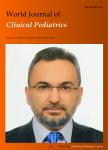Burden of respiratory syncytial virus infection in young children
Burden of respiratory syncytial virus infection in young children作者机构:Research Unit for Neonatal Infectious Diseases and Epidemiology Division of Neonatology Department of Paediatrics Medical University of Graz
出 版 物:《World Journal of Clinical Pediatrics》 (世界临床儿科杂志)
年 卷 期:2012年第1卷第3期
页 面:8-12页
学科分类:1002[医学-临床医学] 100202[医学-儿科学] 10[医学]
主 题:Children Epidemiology Infant Palivizumab Respiratory syncytial virus Respiratory tract infection Risk factors Vaccine
摘 要:Respiratory syncytial virus(RSV) is the most frequent and important cause of lower respiratory tract infection in infants and children. It is a seasonal virus, with peak rates of infection occurring annually in the cold season in temperate climates, and in the rainy season, as temperatures fall, in tropical climates. High risk groups for severe RSV disease include infants below six mo of age, premature infants with or without chronic lung disease, infants with hemodynamically significant congenital heart disease, infants with immunodeficiency or cystic fibrosis, and infants with neuromuscular diseases. Mortality rates associated with RSV infection are generally low in previous healthy infants(below 1%), but increase significantly in children with underlying chronic conditions and comorbidities. Following early RSV lower respiratory tract infection, some patients experience recurrent episodes of wheezing mimicking early childhood asthma with persistence of lung function abnormalities until adolescence. There is currently no RSV vaccine available, but promising candidate vaccines are in development. Palivizumab, a monoclonal RSV antibody that is the only tool for immunoprophylaxis in high-riskinfants, lowers the burden of RSV infection in certain carefully selected patient groups.



